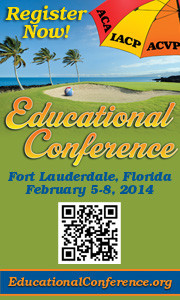|
Editorial: Disinfectants, Part I
A number of questions have been received over the past year regarding the use of disinfectants. We will take a couple of weeks to look at this topic and see exactly what United States Pharmacopeia (USP) Chapter <797> says. The following are some extracted statements from the chapter on disinfectants straight from <797>. One can go to the USP online and do a word search for "disinfectants" and these will show up. The bolded type is the section in which the statements appear.
Disinfectant - An agent that frees from infection, usually a chemical agent but sometimes a physical one, and that destroys disease-causing pathogens or other harmful microorganisms but may not kill bacterial and fungal spores. It refers to substances applied to inanimate objects.
Facility Design and Environmental Controls:
The surfaces shall be resistant to damage by disinfectant agents.
Additional Personnel Requirements:
Packaged compounding supplies and components, such as needles, syringes, tubing sets, and small- and large-volume parenterals, should be uncartoned and wiped down with a disinfectant that does not leave a residue (e.g., sterile 70% IPA), when possible in an ante-area of ISO Class 8 (see Table 1) air quality, before being passed into the buffer areas.
Cleaning and Disinfecting the Compounding Area
Any organizational or institutional policies regarding disinfectant selection should be considered by compounding personnel.
In general, highly toxic disinfectants, such as glutaraldehyde, are not used on housekeeping surfaces (e.g., floors, countertops).
This means that the disinfectant has been formulated to be effective in the presence of light to moderate soiling without a pre-cleaning step.
When the surface to be disinfected has heavy soiling, a cleaning step is recommended prior to the application of the disinfectant.
After the disinfectant is sprayed or wiped on a surface to be disinfected, the disinfectant shall be allowed to dry, during which time the item shall not be used for compounding purposes.
Suggested Standard Operating Procedures (SOPS)
20. Gloves are disinfected with adequate frequency with an approved disinfectant such as sterile 70% IPA.
Appendix V. Sample Form for Assessing Cleaning and Disinfection Procedures
(Daily Tasks)
Prepares correct concentration of disinfectant solution according to manufacturer's instructions.
Documents disinfectant solution preparation.
Uses a lint free wipe soaked with sterile 70% IPA or other approved disinfectant solution and allows to dry completely.
In the ante-area, cleans sink and all contact surfaces; cleans floor with a disinfectant solution or uses microfiber cleaning system.
(Monthly Tasks)
Prepares a disinfectant solution as stated in daily tasks that is appropriate for the surfaces to be cleaned.
Cleans buffer area and ante-area ceiling, walls, and storage shelving with a disinfectant solution and a mop or uses a microfiber cleaning system.
Prior to replacing contents into tote, wipes tote with sterile 70% IPA to remove disinfectant residue. Uses new wipe as needed.
Wipes carts with sterile 70% IPA wetted lint-free wipe to remove any disinfectant residue.
Cleans buffer area chairs, the interior and exterior of trash bins, and storage bins using disinfectant solution soaked lint free wipe.
All the above "mean what they say" and are pretty straightforward. Next week, we will look at the different types of disinfectants, their concentrations, etc.
Loyd V. Allen, Jr., PhD, RPh
Editor-in-Chief
International Journal of Pharmaceutical Compounding
Remington: The Science and Practice of Pharmacy Twenty-second edition
| 



